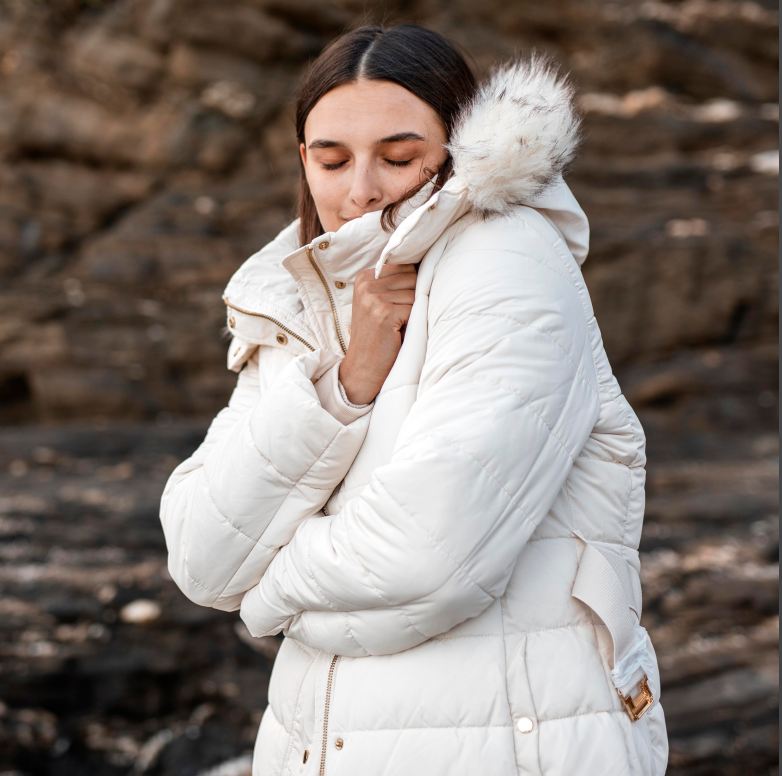From Down to Synthetic: The Science and Innovation Behind Winter Insulation Layers
Understanding Winter Insulation: How Insulated Jackets Keep You Cozy
What’s Winter Insulation and Why Does It Matter?
When temps drop hard, staying warm isn’t just about feeling good—it’s about staying safe and doing your thing. Winter insulation means the stuff and tech in clothes like insulated winter jackets and coats to hold onto body heat. The trick behind insulation is cutting heat escape from your body to the chilly outside.
Insulated jackets are a must-have for cold stuff like trips, hikes, and winter fun. These jackets trap warm air right next to you, building a heat shield against the cold.
How well insulation works depends on a few things, like material build, loft (or “fluffiness”), and wet resistance. Stuff with lower thermal conductivity—or low “thermal transfer coefficient”—holds heat better. This is why down and synthetic fills rule the market for insulated winter coats.
How Do Insulated Winter Jackets Work?
Insulated jackets use a multi-layer setup to fight different weather bits. The outer shell fabric is often nylon or polyester, hit with durable water repellents (DWR) to stop wind and wet.
Inside, the insulation layer—either natural down or synthetic fiber—makes loft, trapping warm air. The lining keeps it comfy on skin while adding more insulation to the core.

Down vs. Synthetic: Which Insulation Wins in the Cold?
Which Insulated Winter Jacket Keeps You Warmest?
Natural down is still the top dog for warmth. Down comes from the fluff under duck and goose feathers and gives a high warmth-to-weight ratio, keeping it light and easy to pack. Its loft traps more air, making it super good in dry, freezing spots.
But synthetic insulation—usually made from man-made polyester fibers—has its own spot. Synthetic insulation keeps giving warmth even when wet, winning in damp or muggy weather. These materials are also allergy-friendly and cheaper overall.
Both insulation types differ in pack size. Down packs tight and bounces back great, while synthetic fills are chunkier but fight wet better.
Hiking Thoughts: Down vs Synthetic Jackets
For hikers, picking down or synthetic comes down to weather guess and how hard you go. We like down for dry and cold spots, especially when weight and pack size count, like mountain trips.
On the flip side, synthetic insulation breathes better than down, fitting high-energy stuff like trail hikes in changing weather. This makes synthetic insulated winter jackets perfect for steady work despite sweat or light rain.
What Materialien Are Used in Down Jackets?
Common Fill Materials
Down jackets mostly use natural down from geese or ducks. However, untreated down loses its insulating ability when wet.
Synthetic options like man-made polyester copy down cluster build. Synthetic fill is a manufactured insulation that mimics down’s warmth-trapping capabilities. These materials dry fast, cost less, and fight wet.
 Outer Shell Fabrics
Outer Shell Fabrics
The outer layer needs to be tough but breathable. DWR-treated fabrics enhance protection further.
Fabric with Bionic /Eco- Free/ Breathable /Water resistant/Windproof properties are also emerging in eco-conscious designs, offering sustainability without sacrificing performance.
How to Layer Clothes for Max Warmth
An insulated jacket works best in a full layering setup. Start with a sweat-wicking base layer to keep skin dry. Add a mid-layer—often fleece or wool—for extra warmth. The outer insulated layer then acts as your guard against wind and rain.
Don’t overdo layers. Too many can trap sweat and cut heat smarts. Tweak based on how active you are and the temp outside.
Winter Insulation Innovation: What’s Coming?
Steps Forward in Synthetic Insulation Tech
Today’s synthetic insulation isn’t stuck on basic polyester sheets. Tech like hollow-core fibers boost warmth without extra bulk. Stretchy heat mixes now give more move while holding warmth—perfect for active gear and puffer jacket material upgrades.
Eco-Friendly Materialien are Changing Winter Outerwear
Green worries are pushing brands to think new. Synthetic insulation uses man-made materials like recycled polyester, cutting need for new resources.
Spotlight on INVIDIA TEXTILE: Leading New Ideas in Winter Outerwear
Who We Are at INVIDIA TEXTILE
At INVIDIA TEXTILE, we focus on making high-work materials fitted for insulated winter coats and jackets. Our way mixes tech smarts with green habits. We stress materials that give top thermal insulation while cutting eco harm.
We give full tweaks for every product—from sizes and colors to fabrics and logos—making sure clients get just what they picture. We support full customization for all needs through our OEM/ODM services.
Our Top Products Redefine Cold-Weather Cozy
Advanced Synthetic Fill Options
Our man-made fibers hold loft even after lots of squeeze cycles, making them great for daily wear and high-work gear. Even after repeated compression cycles, our engineered fiber maintains loft.
These fibers give killer warmth-to-weight ratios—a key measure when checking the best insulation for winter jackets—and match what casual folks and hardcore adventurers want.
Green Shell Fabrics from INVIDIA TEXTILE
We use high-grade nylon or polyester shells hit with DWR for wet fight while pushing recycle. Fabric with Bionic /Eco- Free/ Breathable /Water resistant/Windproof characteristics ensures our coats protect both people and the planet.
Our outer shells make a breathable yet guard barrier ideal for coats with thermal insulation across seasons—from freezing winters to iffy shoulder months.

FAQ (häufig gestellte Fragen)
Q: What’s the difference between ski jackets and insulated winter jackets?
A: Ski jackets focus on waterproofing and windproofing for snow sports; some may not include built-in insulation. Insulated ski jackets combine weather protection with thermal layers for colder conditions.
Q: Can I wear just one insulated winter jacket in extremely cold weather?
A: Yes, but layering enhances performance. In freezing temperatures or low-exertion activities, combining an insulated outer layer with appropriate base and mid-layers is more effective.
Q: How long do down vs synthetic insulated jackets last?
A: Down can lose warmth over time if not properly maintained; however, with care, it can last over 10 years. Synthetic insulation generally lasts 5–10 years but retains performance better when exposed to moisture or frequent washing.
Q: What’s better for daily winter wear—down or synthetic?
A: It depends on climate and activity level. Choose down for dry cold days and superior warmth; opt for synthetic if you expect rain or high activity levels that generate sweat.
Q: What’s the best insulation for winter jackets in terms of sustainability?
A: Recycled synthetic fills offer good thermal efficiency with lower environmental impact compared to virgin materials or unethically sourced down.
With innovations from companies like INVIDIA TEXTILE leading the way in customizable insulated winter jacket design, consumers can now enjoy unparalleled warmth, style, and sustainability all in one garment solution.

 +86-13634185427
+86-13634185427




